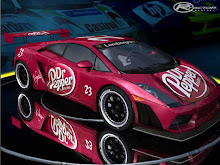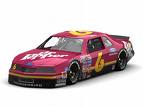 Lock up your little brother! Lock up your small pet! Do you want to have a killer plant at your place? Well you can! But we actually call them "carnivorous" or meat eating plants. Why? Because these plants thrive on small insects that they trap and digest.
Lock up your little brother! Lock up your small pet! Do you want to have a killer plant at your place? Well you can! But we actually call them "carnivorous" or meat eating plants. Why? Because these plants thrive on small insects that they trap and digest.
Carnivorous plants - there are five different types of traps:
1. Pitcher plants trap their prey in a rolled-up leaf that holds a small pool of digestive enzymes or bacteria.
2. Flypaper traps have a sticky mucous to trap the small insects.
3. Snapping traps close their leaves in a snapping motion to trap their prey.
4. Bladder traps suck in prey with a vacuum sucking bladder.
5. Lobster-pot type plants use inward pointing hairs to direct their prey inside them.
 * Charles Darwin first wrote about carnivorous plants in 1875.
* Charles Darwin first wrote about carnivorous plants in 1875.
* The Venus Fly Trap and the Pitcher Plants are the two most commonly known.
* The best environment for a carnivorous plant is a bog.
* Carnivorous plants are very sensitive to tap water that contains minerals and must live on rainwater, or bottled water.
* The biggest killer of carnivorous plants is grey mould which thrives in warm and humid conditions in winter.
Wednesday, May 12, 2010
Killer plants
Posted by
Leslie
at
2:05 PM
0
comments
![]()
Labels: carnivorous plants, pitcher plant, venus fly trap
Tuesday, March 9, 2010
Make your own iceberg
 No wonder the Titanic sank. It didn't have a chance!
No wonder the Titanic sank. It didn't have a chance!
We made our own blocky growler icebergs by filling mugs with water - we added food coloring to make them more interesting and to contrast with the water we floated them in.
Interesting iceberg facts:
- If you camp out on an iceberg, you are known as an iceberger.
- Icebergs form when chunks of ice "calve" or break off from glaciers, ice shelves or larger icebergs.
- On 14 April 1912, four days into the ship's maiden voyage, the Titanic struck an iceberg and sank.
- Approximately 7/8 of an iceberg is under water.
- Icebergs are hazardous to shipping.
- The terms tabular, blocky, wedge, dome, pinnacle, and drydock are used to describe iceberg shapes.
- The terms growler, bergy bit, small, medium, large, and very large are used to describe iceberg sizes.
How are icebergs made? Quick ones are made in your freezer at home or at school.
Icebergs are actually freshwater ice, not frozen sea water. They are made when the edge of glaciers breaks off into pieces to form an iceberg, or in the case of an ice shelf, it begins to float on the sea and then breaks off from the rest of the glacier as a big slab of ice.
Icebergs are made up of snow that has fallen during hundreds or thousands of years. All the stripes and different colored layers in icebergs ae from different layers of snowfall and the weather conditions that occured when the snow fell. If it is very cold then a light open layer with air included will be made and this gives a paler or white layer. The darker, bluer layers come from snow falls in warmer or wet conditions when very little air is trapped in the layer.
Then air is squeezed out of the lower layers of a glacier as more snow falls and so the weight of snow builds up.
Word bank:
iceberg, growler, blocky, frozen, glacier, float, layers, snow, ice, hazard
Posted by
Leslie
at
10:21 AM
0
comments
![]()
Labels: iceberg
Wednesday, February 3, 2010
Do you want fries with that?
Soak Some Potatoes
Slice a small potato lengthwise into several pieces that each have two flat sides. Place some of the pieces in one dish and the rest in another. Fill both dishes with water. Add two tablespoons of salt to one of the dishes, and label it "salt water."
Let the potatoes soak for about 20 minutes. Compare the potatoes. Is there a difference in firmness? Why? Why the potato went soggy and floppy:
Why the potato went soggy and floppy:
Through osmosis, water moves from areas of low salt concentrations to areas of high salt concentrations. Adding salt to the water creates a higher salt concentration in the dish than in the potato. Therefore, water in a potato that is soaking in salt water migrates out, leaving behind a limp potato!
People often make celery and strips of carrot go crisper by soaking them in fresh water. What happens if you soak these vegetables in salt water?
Posted by
Leslie
at
8:09 PM
0
comments
![]()
Labels: potatoes, science experiment
Monday, January 25, 2010
Fold a piece of paper in half seven times

Can you do it eight times? Try it and see. You can use A3 or A4 printer paper. You might like to work in teams. Good luck!
The TV show Mythbusters took on this challenge and did manage to fold a piece of paper 11 times, but it was in an airplane hanger, and it was a giant sized piece of paper that they had to use a steamroller on.
Dr Karl also talks about the task here.
Posted by
Leslie
at
9:38 AM
0
comments
![]()
Monday, January 18, 2010
Make a volcano
- bicarbonate of soda
- vinegar
- red food colouring
- cardboard to form into a cone
- glue and ashes or dirt, to make it look real
- a small bottle to place inside the cone
Method:
Make your volcano then place a spoonful of bicarbonate of soda, and a teaspoon of red food colouring in the bottle.
Pour some vinegar into the bottle and stand back!
- The cool red lava is the result of a chemical reaction between the baking soda and vinegar.
- In this reaction, carbon dioxide gas is produced, which is also present in real volcanos.
- As the carbon dioxide gas is produced, pressure builds up inside the plastic bottle, until the gas bubbles out of the 'volcano'.
Here is a world map of volcanos.
Here is a map of the world's most recent volcanos!
Posted by
Leslie
at
9:43 PM
0
comments
![]()
Labels: science experiment, volcano










